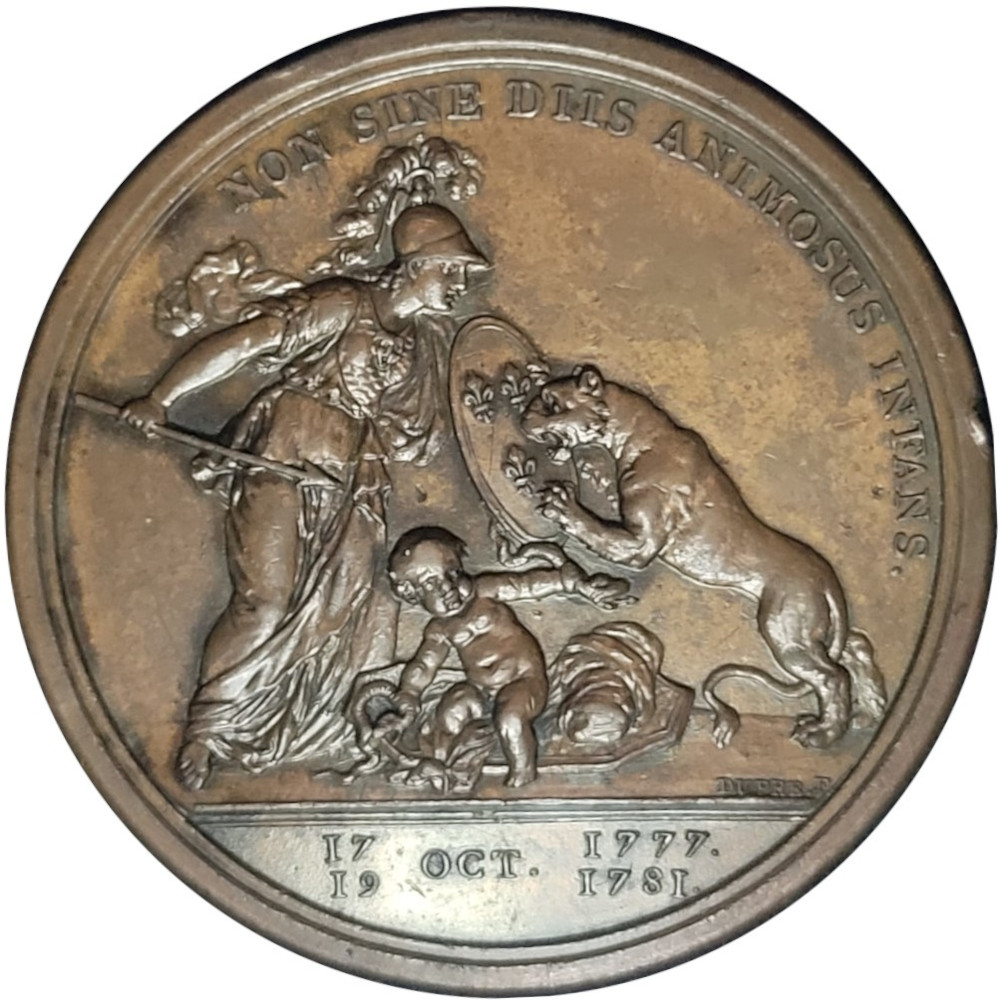1783 Peace of Versailles Libertas Americana Medal Betts-608. Tin with Copper Scavenger. PCGS MS61
An unusually nice example of this popular medal, struck in Europe to mark the end of the American Revolution and the associated conflicts. Bright and lustrous, with deeply reflective and untoned fields. The scavenger, a plug of copper inserted at the exergual line before striking, has done its job, attracting corrosion and toning to dark brown. The scavenger’s presence has allowed the tin to remain boldly brilliant, which is exactly why it’s there. [This is a great example of European technological innovation in the beginning of the industrial revolution which apparently wasn’t taken up widely, but they tried] The detail is sharply rendered on both sides, and the concentric lathe lines remaining from the machining of the unstruck planchet are still subtly visible. The fields show trivial handling marks and lines, but none are terribly significant.
Probably struck in Germany for a principally Dutch and French audience, this medal borrows the “Libertas Americana” legend from the popular medal conceived by Ben Franklin, placing it with two allegorical scenes. One depicts King Louis XVI gesturing to a pole topped with a Dutch style “free hat” that displays a 13-striped shield, representing the new United States. The reverse shows a goddess of Victory holding the shields of four European powers — England, France, Spain, and the Netherlands — while a Gorgon-faced shield of war is cast aside.
Provenance: #1 of a pair from the Cardinal Collection Educational Foundation.












